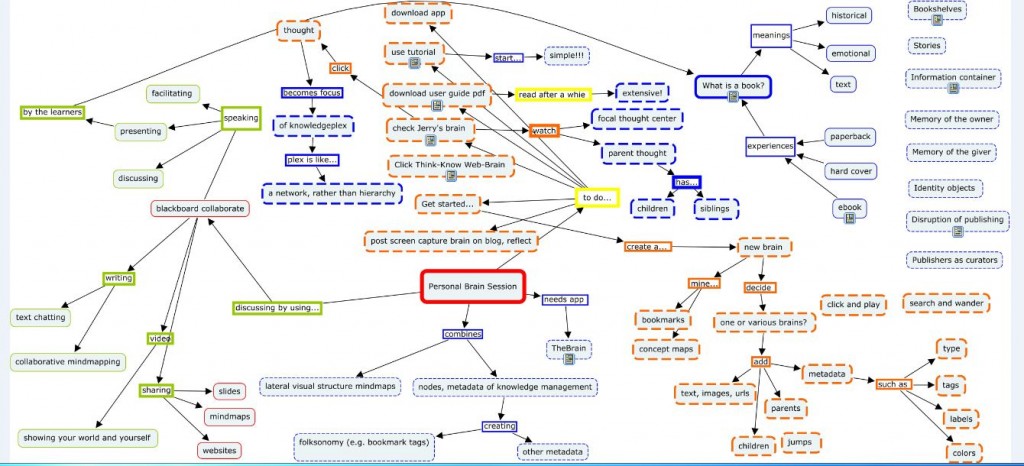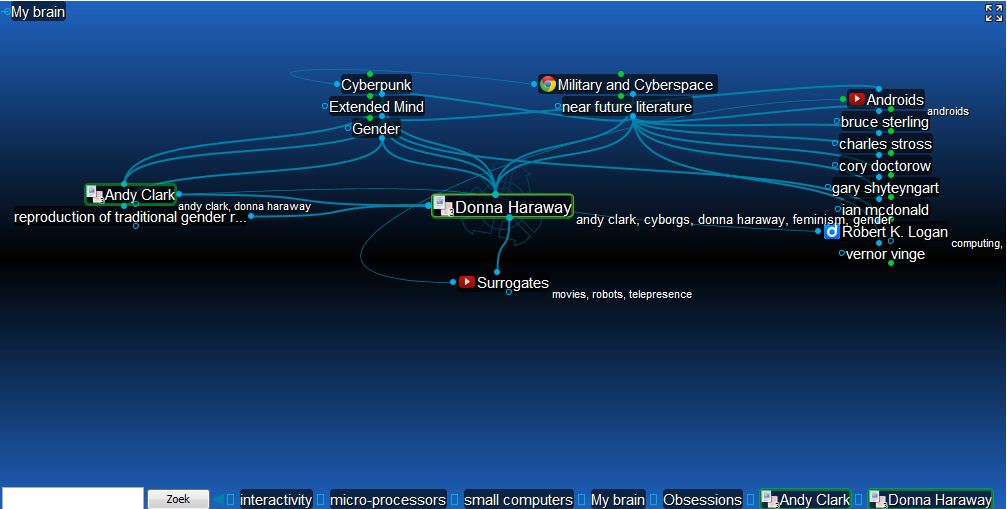So what have I been doing at the Think-Know course facilitated by Howard Rheingold?
These past few weeks we’ve been using Diigo extensively. This social bookmark-service is well-suited for group collaboration. While the course group is reserved for members, you’re welcome to join my own group about the impact of technology on society and the economy (apply and I’ll respond).
The next phase was mindmapping. This is an example of a Cmap I made of one of our synchronous sessions:
(click to enlarge)
During that session we talked about TheBrain, which is a mindmap and database in one. The nodes of the knowledge plex are called ‘thoughts”, and some people have more than 100,000 thoughts in their online brains. This is the company-presentation of TheBrain 7:
https://youtube.com/watch?v=fEvlZTvBr_E%3Fversion%3D3%26hl%3Den_US%22%3E%3C
This is a section of the Technology-thoughts in my online brain – the tools enables you to have this kind of random walks:
https://youtube.com/watch?v=qs_pnxNvXBM%3Fversion%3D3%26hl%3Den_US%22%3E%3C
Now what are the benefits of using a tool such as TheBrain? It allows to get things done by externalizing a number of cumbersome brain processes. It generates ideas – e.g. I was integrating a thought about Andy Clark‘s Extended Mind and Natural Born Cyborgs, and through a link/association with another thought about the reproduction of traditional gender relations in the counterculture, I realized I should study Donna Haraway and her feminist thinking regarding cyborgs and minds. This is a typical ‘jump thought’ facilitated by these tools and which makes them so valuable.
Disclaimer: I’m using the above mentioned tools on my own expenses, I have no ties with the companies involved.



